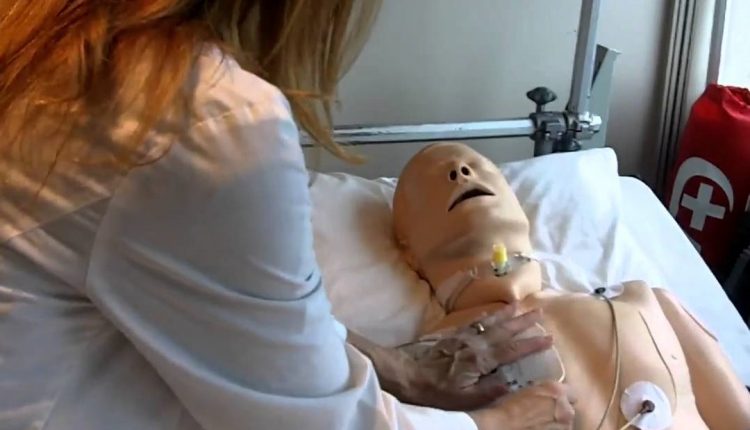
Precordial thump: meaning, when to do it, guidelines
The precordial thump is a manual mechanical cardioversion technique, characterised by the administration of a punch to the sternum at heart level, used in extreme emergency conditions and in the absence of an electric defibrillator
Cardioversion is a special procedure that is carried out in the medical field when a subject has an arrhythmia, i.e. an alteration of the normal cardiac rhythm (sinus rhythm), in order to restore it while avoiding dangerous complications that can even lead to the patient’s death.
TRAINING: VISIT THE BOOTH OF DMC DINAS MEDICAL CONSULTANTS IN EMERGENCY EXPO
Cardioversion can be
- spontaneous: when the arrhythmia stops spontaneously, within a few hours of its onset;
- non-spontaneous: when the arrhythmia does NOT stop spontaneously, in which case medical personnel must intervene as soon as possible to restore sinus rhythm.
Non-spontaneous cardioversion can be carried out in three ways: pharmacological cardioversion, electrical cardioversion (with an external defibrillator or internal ICD) or, indeed, mechanical cardioversion using a precordial fist.
The mechanical energy imparted by the fist should convert into sufficient electrical energy to restore normal sinus rhythm.
RESCUE RADIO IN THE WORLD? VISIT THE EMS RADIO BOOTH AT EMERGENCY EXPO
Precordial thump defibrillation: how to do it?
The operator stands at the side of the patient placed on a possibly hard surface and administers the precordial fist on the sternum at heart level.
Important:
- after making the fist, immediately withdraw your hand (do not leave it resting on the patient’s chest): the blow must be “dry”;
- the fist must be given with the ulnar part of the fist itself;
- the fist must be impressed in the lower half of the sternum;
- the force of the manoeuvre must be “important” but not violent, especially if the operator is particularly robust and/or the patient particularly slender or “fragile” (e.g. children and the elderly);
- the force of the fist is regulated and limited by starting the fist from a distance of approximately 20 centimetres from the chest;
- the manoeuvre should be avoided if possible if there are significant wounds on the chest and/or there is a risk of injury to the spine;
- the manoeuvre should not be repeated.
Precordial thump defibrillation: when to do it?
This manoeuvre should only be performed in the event of cardiac arrest when a defibrillator is not available, i.e. in extreme emergency situations.
In rare cases, it has actually made it possible to convert ventricular fibrillation or ventricular tachycardia into an effective cardiac rhythm, but more frequently it is ineffective or can even cause an opposite conversion, ultimately leading to asystole, which further aggravates the situation, so it is extremely important to use this technique only if there are no other options.
In order to be performed, this technique should only be carried out if
- it is within the first 10 to 30 seconds after the occurrence of the arrhythmic phenomenon, no longer;
- you are certain that you do not have a defibrillator immediately available;
- you know what you are doing: it should only be performed by appropriately trained healthcare professionals. NEVER UNDER ANY CIRCUMSTANCES WITH HEALTH CARE OPERATORS, or you may irreversibly worsen an otherwise solvable situation.
Read Also:
Emergency Live Even More…Live: Download The New Free App Of Your Newspaper For IOS And Android
Difference Between Spontaneous, Electrical And Pharmacological Cardioversion
Compensated, Decompensated And Irreversible Shock: What They Are And What They Determine
Drowning Resuscitation For Surfers
First Aid: When And How To Perform The Heimlich Maneuver / VIDEO
What Is A Cardioverter? Implantable Defibrillator Overview
First Aid, The Five Fears Of CPR Response
Perform First Aid On A Toddler: What Differences With The Adult?
Heimlich Maneuver: Find Out What It Is And How To Do It
Chest Trauma: Clinical Aspects, Therapy, Airway And Ventilatory Assistance
Patient Procedures: What Is External Electrical Cardioversion?
Internal Haemorrhage: Definition, Causes, Symptoms, Diagnosis, Severity, Treatment
How To Carry Out Primary Survey Using The DRABC In First Aid
First Aid: Definition, Meaning, Symbols, Objectives, International Protocols



